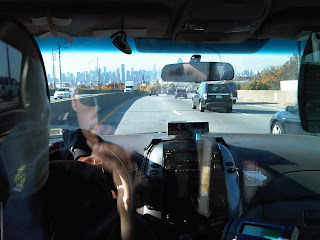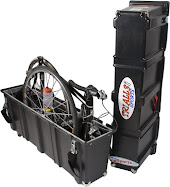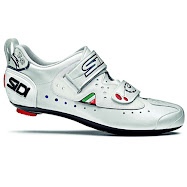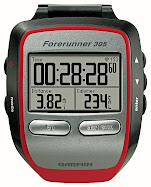
Pensaba que esta sería mi última carrera del año pero ....
Y por si alguien se plantea correr en NY, unos consejos de la organización:
There are many challenges to running the ING New York City Marathon, from the logistics of the massive start out of Staten Island, to climbing the five bridges, to the huge cheering crowds, to "the Wall" at 20 miles, to the last 3 miles in hilly Central Park and the final sprint (or at least wobble) to the finish line at Tavern on the Green.
One Tough Course
No marathon is easy, but the ING New York City Marathon can be even tougher than most because of the course. It's not fast—don't let anyone tell you otherwise. You need to be realistic with your time goals or you will be setting yourself up for disappointment. To predict your marathon time, you would generally take your half-marathon time, multiply by two, and add 10 minutes—assuming comparable courses, weather, and training. For the ING New York City Marathon, add another five to 10 minutes to your range. For example, if you ran Grete's Great Gallop Half-Marathon in 1:30, your range for the ING New York City Marathon would be 3:10 to 3:20.
Here is what makes the course so tough:
The hills. The five bridges along the course offer uphill climbs ranging from a quarter mile to a mile followed by a downhill of roughly equal length and grade. The problem is, you lose more time on the ups than you gain on the downs. In addition, from 8 miles on there are several moderate inclines of a quarter mile to a half mile (in addition to the bridges), which tamper with your quest to stay on pace. The toughest hills aren't even the toughest. At the end of the marathon even the slightest inclines take a toll. And there are several ascents in the last 3 miles that make the going plenty tough at a time when the distance to go is enough of an obstacle. You start a moderate incline just past 110th Street on Fifth Avenue, which gradually increases until you turn into Central Park at 90th Street. The climb is relentless, and lasts almost a full mile. And there are still more hills to abuse your tiring legs in the final mile. The two long blocks up Central Park South don't look so bad to the spectators screaming at you to pick up the pace. But after more than 25 miles that moderate incline is a challenge for sure. And wouldn't you know it—the last quarter mile is up a more-than-moderate uphill. Whose idea was that?
The weather. Be prepared to adjust your clothing, pacing, and fluid intake for the weather. One thing is for sure: New York is always windy on marathon day! It is just a matter of how windy and in which direction the breezes blow. And they usually blow in gusts that swirl around the big buildings so that at times you swear you're being blown in opposite directions. If the weather forecasters claim the wind is from the north, then expect especially tough going from 2 to 15 miles and 16 to 20 miles—that is, most of the way—with a tailwind from 21 to 25 miles. And if the wind is from the south, you'll fly from 2 to 15 miles and from 16 to 20, but that headwind will be tough from 21 to 25. Most likely the wind will hit you at various angles as you wind your way through the course. That is, you can't trust it at all.
The crowds. You have two types of crowds to deal with: the millions of spectators along the course and the 44,000 athletes navigating it. Both can help and hinder your efforts. Spectators may crowd the course as they press forward to cheer on runners, they also make the course a bit longer because you can't cut perfect tangents along the way. But for the most part the throngs of screaming marathon fans will help keep you going. This makes for a faster race than if you were out in the country with just the cows looking at you. Along the course you may have to weave around runners who started too fast. And you'll have to slow at aid stations to get a clear shot at the fluids. But overall, having thousands of runners to pass—and to pull and push you—will help keep you going.
The turns. A course is measured as if you ran the shortest possible distance. That means cutting perfect tangents on each and every turn. Even if no spectators or other runners were in your way, it would be impossible to run exactly the way the precision-obsessed course certifiers go. As a result, you will—sorry—run longer than 26.2 miles. This is why some miles are longer than others. A mile—about 20 city blocks—on a straight line up First Avenue is measured almost exactly the way you run it. But a mile in Central Park is longer than a mile, because you can't exactly follow the way it is measured. The more turns in a course, the slower the course, not only because you end up running a bit longer, but also because you have to slow to make turns while you run.
The logistics. In a small race, you can show up an hour or so before the start, pick up your number, loosen up calmly, jog a little, and walk to the start line a few minutes before the start. But because of the huge numbers of participants and the complexity of the city itself, the logistics for the ING New York City Marathon are complex, and can tax your physical and emotional energy. You have to get to the expo to get your number—and if you're not careful you may spend too much time on your feet wandering around catching the excitment. This may drain you. You should therefore visit the expo early. At the start, you have to make your way to the baggage area and then to your start corral. Then you proceed to the start area and stand for about half an hour. This sure isn't an ideal warm-up, but how else can the race officials line up thousands runners from all over the world in time for a reasonably orderly start? Try to be patient. Through all the course's challenges, hang in there! Don't let the fact that New York is not a world-record course scare you away from having a great race. Enjoy the excitement and energy that make the ING New York City Marathon unique. You run New York not to run a personal record, but because it is New York—where the world comes to run! I've run the race 12 times and coached thousands of finishers of all abilities. Believe me, knowing the ING New York City Marathon course can help you plan your strategy on race day. The following description can be a big help.
Mile-By-Mile Course Tour (Note: Kilometer markers are also posted every 5K.) Segmenting the course in your mind is a great way to break it down into more manageable pieces. After all, 26.2 miles not only sounds like a long way to run—it is! So take it one borough at a time, enjoying all that New York City has to offer along the way.
The Start/Staten Island At the boom of the cannon, you are off and running—uphill. The first mile is up the incline of the Verrazano-Narrows Bridge. It actually doesn't seem that steep, as you have to start slowly due to the crowd. You are full of adrenaline, and you can't see the slope ahead of you, just a mass of runners. Think of this as a safeguard—if you had a perfect start, you would most likely sprint up the hill and waste a lot of energy that you would love to have late in the race. The second mile is all downhill. Be careful not to pick the pace up too much here or you will not only waste energy, but you could also overstride and cause an injury as you are not fully warmed up. It is best to disregard your time splits for the first 2 miles, as they are not accurate readings of your pace. Average your time for the first 2 miles for a more accurate reading.
Brooklyn From 2 to 8 miles the course is fairly flat and can be fast, depending on which way the wind is blowing. There are some slight ups and downs, but not too bad. And it is almost a perfect straight line. The Green and Blue starts merge on Fourth Avenue just before 4 miles. Until mile 8 they are to the right of the median, and the Orange start is to the left. Crossing the median is prohibited. Green and Blue start runners shouldn't attempt to pace themselves with Orange start runners—at least not until after the 8-mile mark, where all three starts merge. Use the huge Williamsburg Bank clock tower to guide you to the 8-mile mark near the Brooklyn Academy of Music. A bit past that point, you encounter a few uphills that aren't too nasty, but after running along the relatively flat sections for 6 miles they can upset your ryhthm.
From 8.5 to about 10 miles you get some nice downhills, followed by some moderate ascents over the next mile.
From 11 miles to the 20K mark it is mostly down or flat. Look forward to a nice downhill at 20K as you turn right. Then you go left, toward the Pulaski Bridge, and climb more than a quarter-mile, passing the 13-mile mark and the half-marathon mark on the way to the bridge's crest.
Queens You then zoom down the other side of the bridge into Queens. The next mile or so is mostly flat, but brace yourself for what lies ahead. You start a gradual climb at about 14.5 miles, then turn left and start the steep half-mile climb up the Queensboro Bridge. You pass the 15-mile mark soon after you start the climb. The half-mile down the other side of the bridge is tough on the legs, as it is steep and you wind sharply to the left at the steepest section at the bottom, where you cross the 16-mile mark.
Manhattan Now begins the charge through the largest and loudest crowd on the course. First Avenue is straight, but it is not flat by any means. Rather it is a series of moderate ups and downs ranging from two blocks to over a mile. Know when the downs are coming, and use them for relief and to push a bit more to make up some time. From 60th Street to 70th Street is up, then down from 70th to 74th, followed by up from 74th to 86th, down from 87th to 90th, then a flat stretch to 96th. From there begins a difficult stretch. It is uphill almost all the way to 125th Street, and then you climb almost half a mile to the top of the Willis Avenue Bridge. In addition to the uphills, the thinning crowd makes this section tough as you get farther away from the rowdy East Side bars.
Bronx Near the end of the bridge, you at last get a downhill, which takes you past the 20-mile mark. This part of any marathon can be tough. Continue down and around to the right where you have a one-block flat segment, followed by a left turn and an uphill on 138th Street. This year the course turns right onto Third Avenue/Morris Avenue, left onto 140th Street, left again onto Rider Avenue, and then right onto 138th Street and over the Madison Avenue Bridge, where you cross the 21-mile mark. Finally, you dip down, then turn left onto Fifth Avenue.
Manhattan, Again You are now—at last—headed south for Central Park! The crowds in Harlem are very loud and supportive, especially the gospel singers at the churches. The half-mile after 21 miles is flat, then slightly uphill. Don't get fooled when you see trees ahead. It's not Central Park yet, but rather Marcus Garvey Park. You go right, left, left, right around it (and the turns are not easy on the legs at this stage!), and at 22 miles return to Fifth Avenue, where you enjoy a flat-to-slightly-downhill half mile to the edge of Central Park at 110th Street. But don't get too used to it. After you cross 110th Street the route gradually ascends. The 23-mile mark is at 103rd Street, and if you're struggling, you can tell yourself that from here it is just over 5K to the finish! However, from here almost all the way to 90th Street is—sorry—uphill. Use 90th and Fifth as a mental uplift. Many local runners gather here before and after training runs, and NYRR's headquarters is nearby at 9 East 89th Street. Think of it as very friendly running territory. You cross the 24-mile mark at the Metropolitan Museum of Art, a location with a large crowd, then roll down a half-mile hill to Loeb Boat House. This is followed by a short but significant incline-nothing uphill is insignificant at this point—that carries you past the 72nd Street transverse. It's flat and slightly downhill as you approach the 25-mile mark, where you veer left to exit the park via a half-mile downhill stretch—hooray! You turn right onto Central Park South by the Plaza Hotel and go a quarter-mile slightly uphill, flanked by huge crowds. At Seventh Avenue, you get a long block downhill as you collect your energy for the final assault. At Columbus Circle, you zoom down a 100-yard stretch to the park's West Drive, then start a gradual ascent that becomes a serious climb at the 26-mile mark. But so what! You can't even see the grade. All you can see are marathoners—your fellow heroes and heroines—bordered by the massive cheering crowd. And soon all you see is that wonderful, long-awaited sight: the finish line clock. You may have felt and looked awful a few yards back, but now is the time to look great for all your fans, and for the finish-line photo that will stir memories for many years. Painful memories, for sure, but proud ones. Because conquering a marathon is a serious accomplishment. Beating the ING New York City Marathon is even more special.

































































